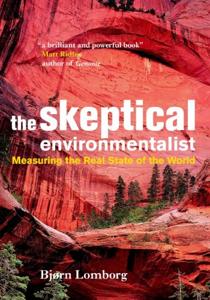
Want to learn the ideas in The Skeptical Environmentalist better than ever? Read the world’s #1 book summary of The Skeptical Environmentalist by Bjorn Lomborg here.
Read a brief 1-Page Summary or watch video summaries curated by our expert team. Note: this book guide is not affiliated with or endorsed by the publisher or author, and we always encourage you to purchase and read the full book.
Video Summaries of The Skeptical Environmentalist
We’ve scoured the Internet for the very best videos on The Skeptical Environmentalist, from high-quality videos summaries to interviews or commentary by Bjorn Lomborg.
1-Page Summary of The Skeptical Environmentalist
Deceitful Data
It’s important to have a clear understanding of the world. However, many people are misinformed and believe that we’re running out of energy and natural resources. This is not true; there’s plenty of both for everyone in the world. For example, life expectancy has increased from 30 years in 1900 to 67 today, and poverty has been reduced more than ever before even though it decreased by half just in the last 50 years!
People and organizations that exaggerate the dangers of environmental problems are misleading everyone. They do this because they need to justify their existence, as well as attract funding for their causes. In other words, the more serious the problem seems to be, the more important it is for people like them to solve it. The media helps these groups by reporting on such exaggerated claims so that viewers won’t miss out on a story with dire consequences if they don’t tune in.
To understand our world, we must look at long-term trends. Some people use emotional stories to support their arguments, but that’s not a good way to assess the situation because you can always find stories that support the opposite view. Another misleading tactic is choosing a short time frame in which data supports your argument and ignoring other years or decades of data. And obviously, if you’re going to make an assessment about something important like global warming, you need more than five years worth of data so you can see how it’s changed over time.
When we’re analyzing environmental issues, it’s important to view them in relation to other problems. For example, if a certain pesticide causes only a few cases of cancer, the number is so small that getting rid of the pesticide would be counterproductive because fruits and vegetables help prevent cancer. In this case, people would eat fewer fruits and vegetables because they’d become more expensive without pesticides.
When we are forced to choose between what is best for humanity and what is good for animals and plants, it’s important to consider our relationships with them. We share many common interests with animals and plants, such as the need for clean air and water. Ultimately, we must use humans as a point of reference when making these decisions.
It is a fallacy to think that economic growth and environmental protection are mutually exclusive. In fact, it is often the opposite. Environmental development can result from economic development because as people’s income rises they care more about their environment.
The Worldwatch Institute, the WWF (World Wide Fund for Nature) and Greenpeace are among the organizations that spread misinformation on environmental issues. These groups use statistics from official sources such as the United Nations and its subsidiaries to support their claims.
The Reality About Human Welfare
Humans are better off now than they were in the past. However, there is a growing population that will reach 9 billion by 2050.
The main reason for the increase in population is due to better access to food, medicine, clean water and sanitation. In a traditional agricultural society, people have a low income and many children who are more likely to die because of poor living conditions. However, as the economy develops and becomes urbanized, living conditions improve and mortality rates decline. The poorest regions are rural areas with relatively low populations while cities remain the areas of greatest population density and economic growth.
Life expectancy and health have improved in recent years. Life expectancy was about 21 years during the Stone Age, but it increased dramatically to 41 years by 1950. Improved standards of living, such as better food and housing, were one reason for that increase. Public hygiene improvements also contributed to longer life spans. Medical advances since the 19th century have helped people live healthier lives with less disease.






